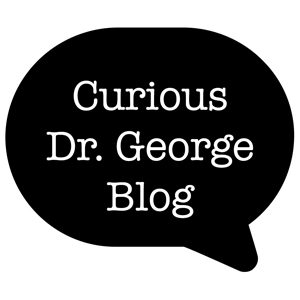High-Energy Blue Light Powers a Promising New Treatment to Destroy Cancer Cells

Curious Dr. George
Cancer Commons Editor in Chief George Lundberg, MD, is the face and curator of this invitation-only column

Stuart L. Marcus, MD, PhD
Founder & Chief Science Officer, SonALAsense
A perennial challenge in cancer treatment is figuring out how to kill tumor cells while leaving healthy cells unharmed. Our Curious Dr. George asks Stuart L. Marcus, MD, PhD, founder and Chief Science Officer at SonALAsense, how his company’s light-activated drug treatment addresses this challenge, holding potential promise for people with brain, bladder, and possibly other cancers.
Curious Dr. George: Your flagship treatment employs sonodynamic therapy (SDT), in which focused ultrasound is used to generate a light that, enabled by a metabolite of aminolevulinic acid (ALA) concentrated selectively in cancer cells, activates the oxidative destruction of those cancer cells but not other cells. How does that work? And what can you tell us about how effective it is for cancer patients?
Stuart L. Marcus, MD, PhD: To answer how SDT works, we have to first understand that SDT is a new, noninvasive form of a light-activated drug therapy called ALA photodynamic therapy (PDT). ALA PDT targets the heme pathway selectively in cancers. When provided with excess ALA, the fluorescent photosensitizer protoporphyrin IX (PpIX) accumulates primarily in cancer tissue to such a specific extent that the U.S. Food and Drug Administration (FDA) has approved ALA-induced fluorescence in a number of different cancer settings. For instance, urologists use it to help identify bladder cancers through blue light cystoscopy. Neurosurgeons also use it every day as a visual aid to resect high-grade brain cancers, such as glioblastoma multiforme (GBM), employing blue light resection and fluorescence-detecting surgical microscopes.
When PpIX is exposed to the high energies of blue light, energy is transferred from PpIX to molecular oxygen (the photodynamic process), making it highly reactive. In 1999, the FDA approved a topical ALA PDT blue light system, which I and my team at DUSA Pharmaceuticals created for treatment of the precancerous skin condition actinic keratosis. That system, now marketed by Sun Pharmaceutical Industries, has treated over 4 million people to date. ALA PDT has also been successfully used in investigational clinical studies to treat recurrent GBM (rGBM) using the ingested dye Gleolan as the source of ALA and by inserting fiber optics within the tumor which deliver laser light. Although I considered further developing PDT for rGBM, this system is so invasive and complex that, in my opinion, commercialization is moot as the treatment is very difficult to standardize.
Instead, with ALA SDT, we use MR-guided focused ultrasound to safely create light in tissue through a process called sonoluminescence. In preclinical studies, we and others have shown that this approach can effectively and selectively kill gliomas in animal models through the PDT process and boost the animals’ survival. In a first-in-man energy dose-ranging study at the Ivy Brain Tumor Center, each of 10 rGBM patients received our intravenous form of ALA, which is called SONALA-001, and we applied SDT to one-half their tumor. The patients’ tumors were surgically removed in 4 days, and oxidative changes (lipoperoxide liberation) and apoptosis were compared in the treated and untreated halves of each tumor. We found that ALA SDT selectively caused PDT oxidative damage to the treated tumor half.
We are now carrying out a therapeutic phase 2 dose-ranging clinical trial in rGBM patients. We are also treating children with the deadly cancer diffuse intrinsic pontine glioma (DIPG), in which we treat the entire brain stem. We have seen no dose-limiting toxicities as yet in either trial, attesting to the tumor-specificity of ALA. The heme pathway is a universal pathway, and the tumor-specific PpIX accumulation response to being provided with excess ALA gives us hope that SDT will prove therapeutic for many types of tumors.
Dr. Marcus can be reached at smarcus@sonalasense.com.
***
Copyright: This is an open-access article distributed under the terms of the Creative Commons Attribution License, which permits unrestricted use, distribution, and reproduction in any medium, provided the original author and source are credited.


